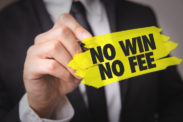We must collect all information on your damages claim. The investigation of your damages concludes when you are done treating with doctors and other health care providers:
Medical Records – When you finish with each provider, your attorney will order all of the relevant medical records, including ambulance records, if necessary. We will order medical records from before the accident as well to assure your integrity remains intact and free from accusations of a pre-existing condition. If you had a pre-existing condition and it was worsened as a result of the accident, you can recover.
Medical Bills – Along with medical records, your lawyer will need to obtain all of your medical bills, even if they were paid by MEDPAY, your health insurance, Medicare/Medicaid or Medi-Cal.
Lien Information – If your bills were paid by Medicare or Medicaid, and sometimes if your bills were paid by private health insurance, your lawyer may have to get an itemized lien statement from that provider.
Lost Wages – Money you could or should have earned if you were not injured.
Permanent Injury – If you are permanently injured, you may need what is called a “Life Care Plan”. This includes the cost of future medical care, vocational rehabilitation if you cannot return to work and difference in wages from before and current.
Ordering medical records and bills takes a few weeks following the completion of treatment. Lien information can be more difficult to obtain—health insurance providers usually aren’t bad, but Medicare and Medi-Cal can slow the process.
We may be able to speed it up if we ask nicely, but it is one big system that most lawyers cannot move, whether they ask nicely or demand it. If you hire us, we will be part of the solution, work as fast as possible, and be honest about where we are at in the process and how long it will take.




